Har ki Dun Trek – Comprehensive Guide (2024)
- Trekking Destinations
-
Jul 08
- Share post
Embark on an exhilarating journey through the mystical trails of the Har Ki Dun Trek. Discover the untouched beauty of the Garhwal Himalayas as you immerse yourself in breathtaking landscapes and vibrant cultures.
Get ready to be captivated by majestic peaks, vibrant wildflowers, and the rich biodiversity of Govind National Park. Uncover the mythological significance of Har Ki Dun, and let the spiritual aura transport you to another world.
This comprehensive guide provides detailed itineraries, valuable tips, and personal insights to ensure an unforgettable adventure. Pack your bags, unleash your inner explorer, and let the mountains ignite your wanderlust.
Get ready to create cherished memories and forge a deep connection with the Himalayas. The call of the mountains awaits; are you prepared to answer it?
- Max Altitude: 11,660 Ft. (3,556M)
- Average Trekking Fees: ₹ 9000 – ₹ 12,000
- Distance: 48 kms
- Difficulty: Easy-Moderate
- Duration: 5-6 days
- Ideal For: Beginner & Experienced Trekkers Both
- Best Season: April – June & September – November
- Region: Uttarakhand
Table of Contents
ToggleOverview of the Har ki Dun Trek
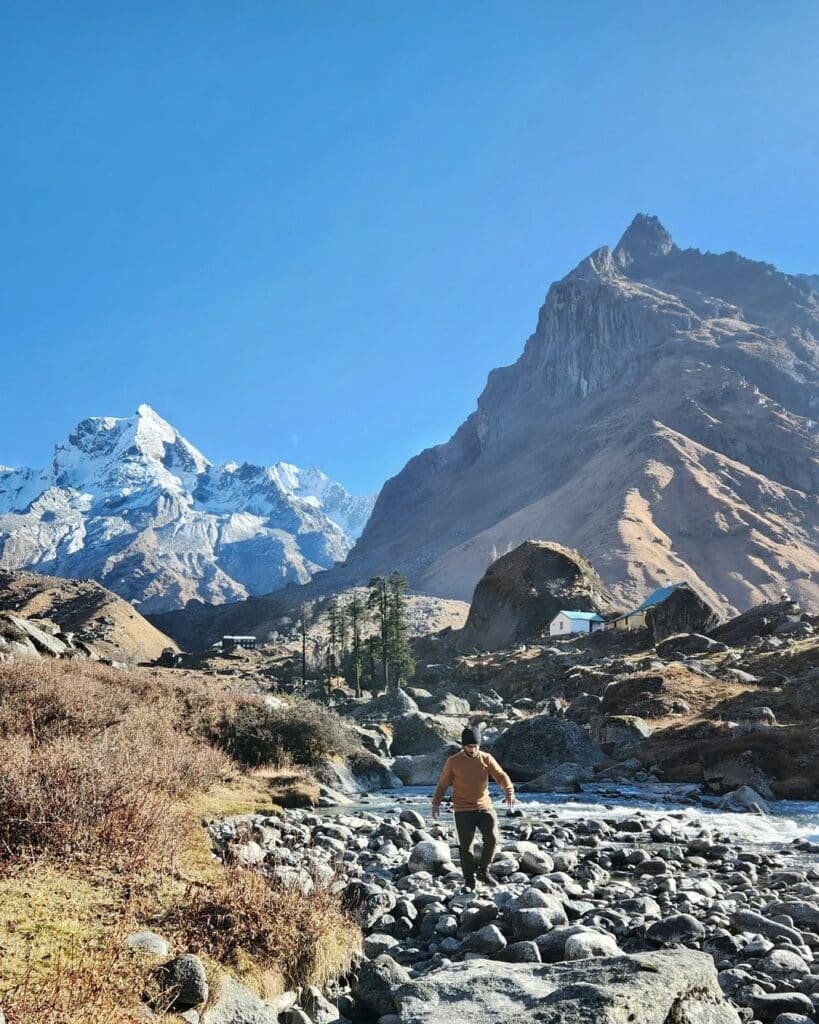
Har Ki Dun trail, revered as the “Valley of Gods,” is an exhilarating trekking experience in India’s Uttarkashi district of Uttarakhand area. Covering a distance of approximately 48 kilometres, it introduces trekkers to a blend of adrenaline-charged exploits and captivating natural splendour. The journey starts from the charming hamlet of Sankri and gradually threads through lush forests, winding rivers, ancient settlements, and stepped agricultural fields.
The path unravels awe-inspiring vistas of the Swargarohini group of peaks and Bandarpunch peaks, letting trekkers bask in the tranquil grandeur of the Himalayas. The trek caters to all, from novices to seasoned trekkers, featuring a easy-moderate level of challenge and reaching a peak altitude of 3,556 meters (11,660 feet).
The route wends through Govind National Park, a haven of diverse flora and fauna, including numerous uncommon species. The optimal months for embarking on this trek are from April to June and September to December, offering the most agreeable climate.
The trek culminates in the breathtaking Har Ki Dun Valley which is also the catchment area & the major source for Yamuna river. Steeped in Hindu mythology, the trek’s conjectured to be the route the Pandavas took on their journey to heaven. This invigorating journey weaves natural splendour, thrill, and a sprinkle of mythology, securing it as a bucket-list item for any trekking enthusiast.
Trek Difficulty & Duration
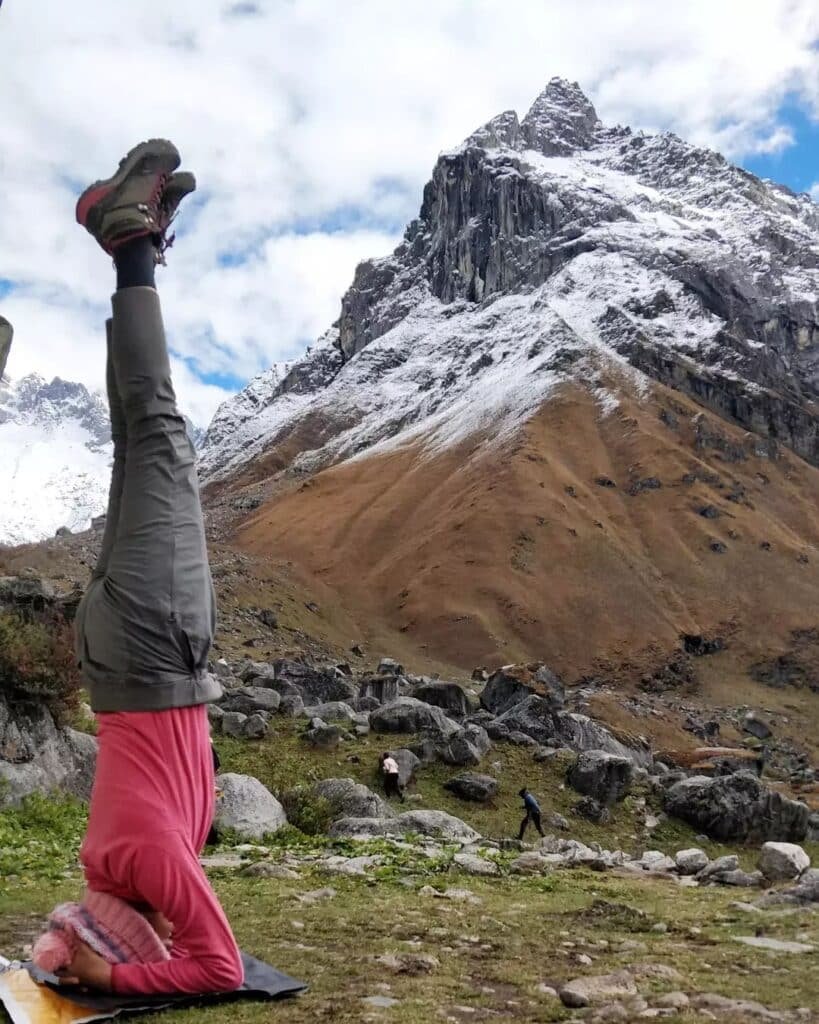
The trek is truly a journey of a lifetime. Generally, it takes about 7 to 8 days to complete, spanning an incredible 48 kilometres of diverse landscapes. Every day, you’ll cover roughly 6 to 7 kilometres, which means you’ll be trekking for about 4 to 6 hours each day – enough to keep you on your toes and give you plenty of time to soak in the vistas.
We won’t sugarcoat it; this trek is labelled as easy-moderate. Some parts are steep, and you’ll regularly climb up and descending down the rugged terrains. Plus, at its highest, the trek reaches a staggering 3,556 meters. It’s a demanding venture, but the breathtaking views and sense of accomplishment are worth every bead of sweat.
Fitness-wise, you’ll need to be in pretty good shape. A month before you head out, start working on your cardio. Run, cycle, swim – anything that gets your heart rate up. Pay attention to strength training, especially your leg muscles, considering the amount of walking and climbing involved.
Finally, remember to acclimatise. Spend a day or two at Sankri, the base camp, before you start the trek. You’ll need that time to adjust to the high altitudes and thin air. Ultimately, the trek is a roller coaster ride that’s not for the faint-hearted but absolutely rewarding for those with a taste for adventure.
Best Season for the Har ki Dun Trek
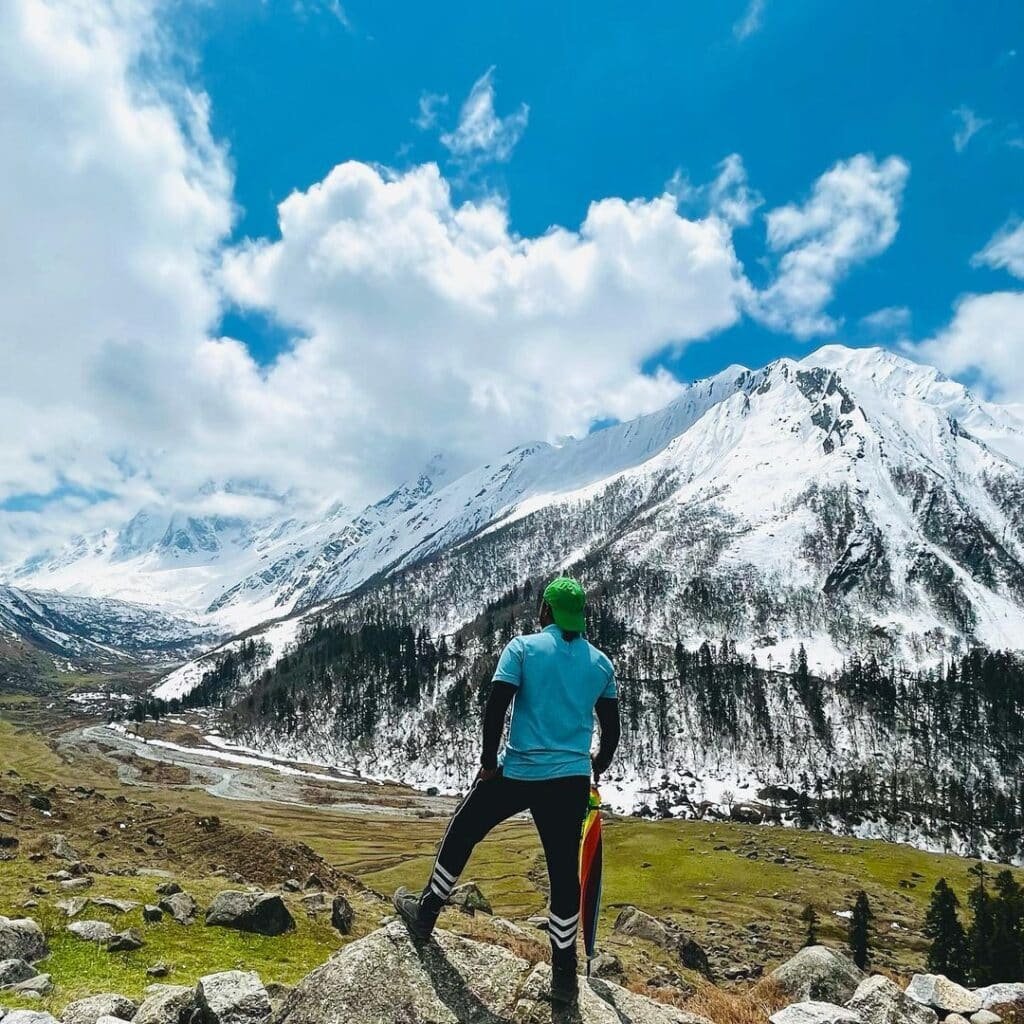
Embarking on the Har Ki Dun Trek is an extraordinary adventure that can be taken up during two distinct seasons, each boasting unique appeal and beauty.
Setting out between April and June, in the summer months, presents a reasonably favourable climate for trekking. Daytime temperatures typically range around a mild 14°C to 16°C. One of the main draws of the summer trek is the chance to witness the valley bursting into a kaleidoscope of blooming wildflowers. However, don’t forget to prepare for the cooler night temperatures, which can descend from -1°C to -5°C. Summer usually lures several trekking enthusiasts, making it an excellent time for those who enjoy bonding with adventurers.
In contrast, Autumn (September to December) carries a unique allure. After the monsoon, the sky becomes clear, revealing crisp, unobstructed views of the majestic peaks. Daytime temperatures during this period hover between 10°C and 12°C. Seeing the trees shedding leaves, creating a warm, autumn-coloured blanket along the trail, is an absolute visual treat. However, brace yourself for the cold nights, with temperatures potentially falling between -5°C to -10°C.
Each season has distinct pros and cons, and your choice should ideally align with your preferences. Whether it’s the summer’s lush wildflowers or the clear, star-lit autumn nights, the Har Ki Dun Trek promises a truly unforgettable experience.
Note: The trek is not accessible during the winter season.
Costing & Budgeting
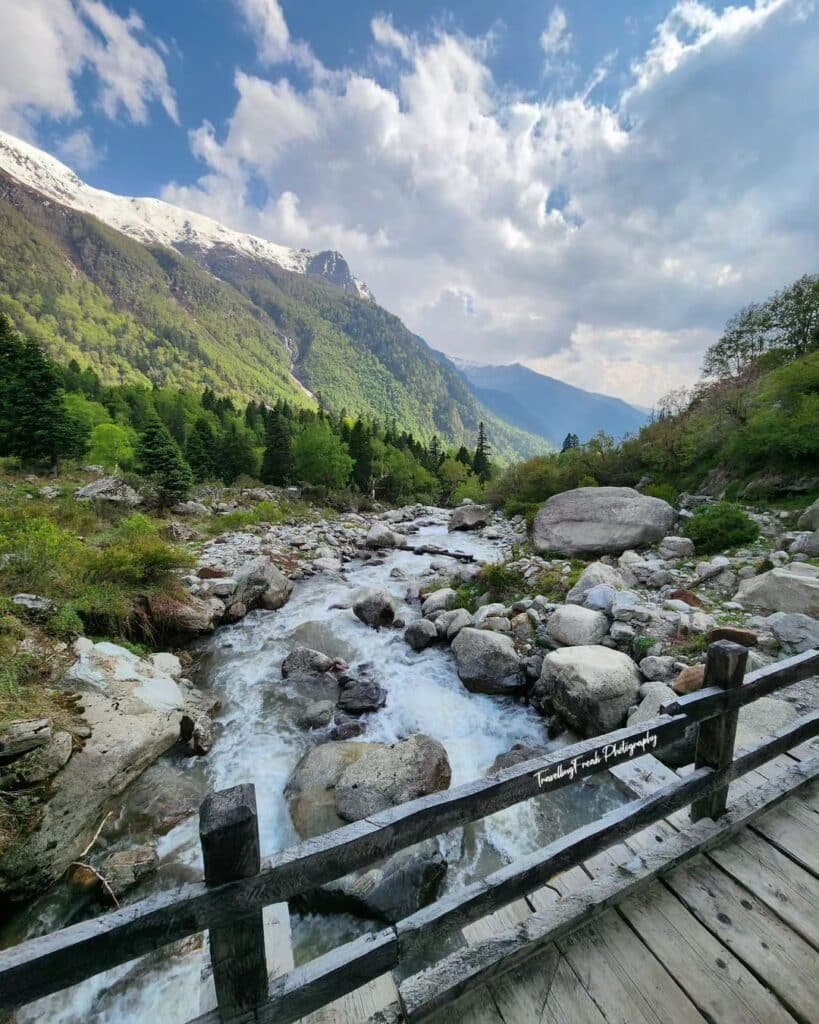
The trek to Har Ki Dun offers an adventure that’s hard to match, and the good news is it doesn’t require you to break the bank.
- Established trekking groups in India typically ask for a Trekking Fee somewhere around ₹9,000 – ₹12,000. Given that this fee covers a significant chunk of your trekking needs, you’d agree it’s pretty good value for your money.
- Now, reaching Sankri, the kick-off point for the trek, will mean some Transportation costs. You could pick flights, trains, or buses depending on where you’re coming from and what suits your style. Though flights would zip you there fastest, they’ll most pinch your pocket. Trains and buses, however, could be easier on the wallet.
- Refrain from sweating over Accommodation charges during the trek because they’re wrapped up in the trekking fees. Whether it’s the comfort of a tent or a lodge you’ll be staying in depends on the stopovers planned in the trek.
- As for Equipment & Gear, you don’t need to shell out big bucks buying everything. Renting gear like trekking poles, shoes, and rucksacks is a smart move that can save a lot.
- The trekking fee also takes care of your Food & Water during the trek. But it wouldn’t hurt to pack extra munchies and water purification tablets to play safe when hunger strikes off meal times or when you need a hydration boost.
Planning your budget ahead of the trek can set you up for a hassle-free and fun trekking experience. After all, that’s what it’s all about.
How To Reach Sankri
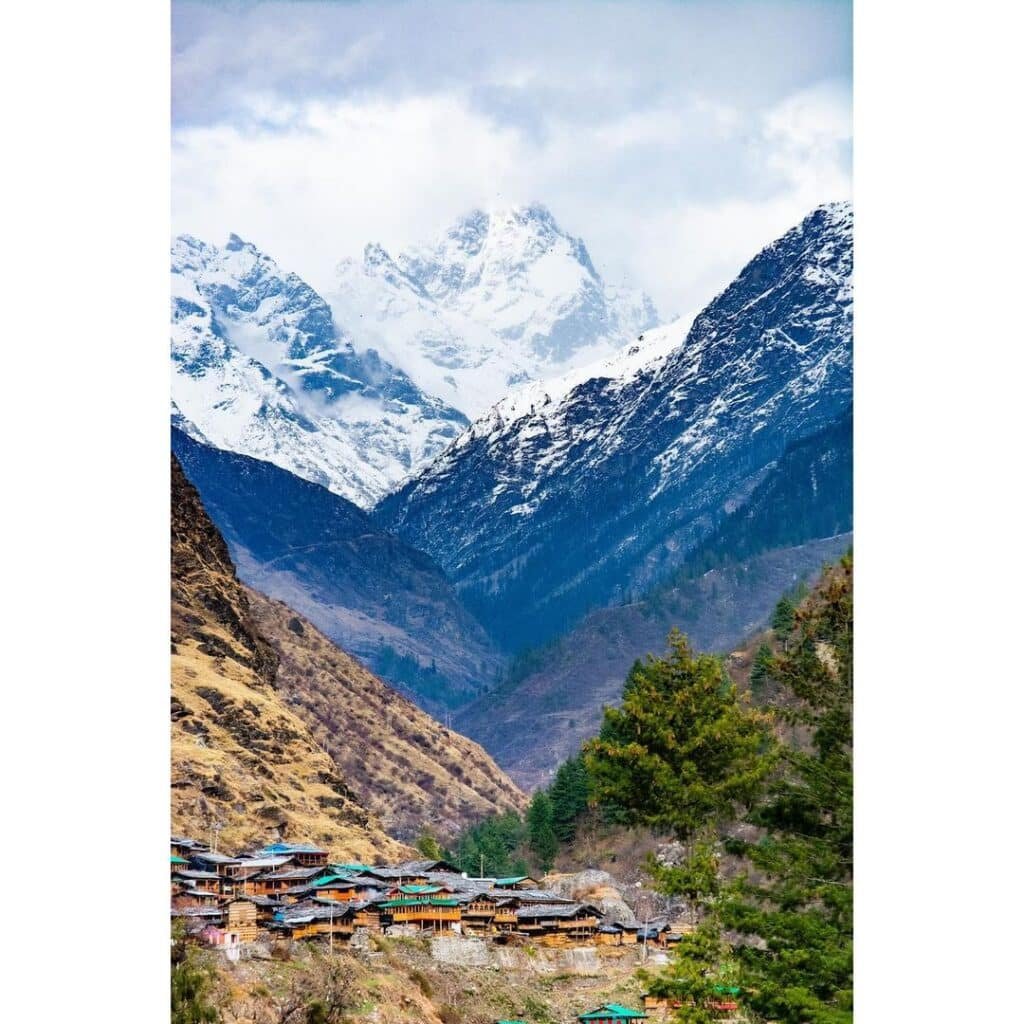
The trek begins with the adventurous journey to the base camp at Sankri. This experience stirs excitement and sets the tone for the incredible expedition that awaits.
- Air Travel:
The vast network of air travel in India brings you close to Sankri. The Jolly Grant Airport in Dehradun is the nearest airstrip, serving as a quick and efficient gateway for trekkers. But remember, the speed and comfort of air travel come at a higher cost. Once in Dehradun, a 200 km journey to Sankri awaits you, usually organised by your chosen trekking group.
- Railway Journey:
For those who relish the nostalgic charm of train journeys, hopping onto a train to Dehradun Railway Station is a fitting choice. Well-connected to various Indian metropolises, trains provide a comfortable and cost-effective travel alternative. The stretch from Dehradun to Sankri, approximately 200 km, is generally handled by your trekking team.
- Bus Ride:
Should your wallet call for a more economical option, taking a bus could be your answer. Regular bus services operate from ISBT Dehradun to Sankri, providing a viable option for those travelling on a tight budget. The comfort level might be less than other options, but the affordability is a plus. Typically, your trekking group takes the ride from Dehradun to Sankri.
Regardless of your chosen mode of transportation, relish the journey and the scenic vistas that come with it. Be it by plane, train, or bus, the final leg of the trip to Sankri promises a burst of excitement, prepping you for the splendid trek ahead.
Detailed Har ki Dun Trek Itinerary

Section 1
(Drive) Day 1: Dehradun to Sankri
- Distance: Approximately 200 km
- Time: Around 8-9 hours (including drive)
- Highlights: Start your adventure with a scenic drive from Dehradun to Sankri, the base point of the trek. Enjoy the picturesque landscapes, passing through charming towns and villages. Once you reach Sankri, take some time to relax, acclimatise, and prepare for the trek that lies ahead.
(Trek Starts) Day 2: Sankri to Taluka (Drive) Taluka to Pauni Garaat (Trek)
- Distance: Around 12 km
- Time: Approximately 6-7 hours
- Highlights: The trek starts by setting off from the picturesque village of Sankri towards Taluka. The trail leads through scenic landscapes, passing by charming small villages. After reaching Taluka, continue the journey to Pauni Garaat, soaking in the beauty of the surroundings.
Day 3: Pauni Garaat to Kalkattiyadhaar
- Distance: Approximately 8 km
- Time: Around 5-6 hours
- Highlights: Embark on a delightful trek from Pauni Garaat to Kalkattiyadhaar. The path takes you through enchanting forests, with wooden bridges adding a touch of rustic charm. As you trek next to the Supin river, the breathtaking views of the valley unfold before you. Reach Kalkattiyadhaar, a peaceful campsite amidst nature’s wonders.
Section 2
(Sumit Day) Day 4: Kalkattiyadhaar to Har ki Dun & back to Kalkattiyadhaar
- Distance: Around 10 km
- Time: Approximately 9-10 hours
- Highlights: Brace yourself for the most anticipated day of the trek. Trek from Kalkattiyadhaar to the magnificent Har ki Dun Valley, a journey of approximately 8 km. Marvel at the majestic snow-capped peaks and vibrant meadows that surround you. Explore the ancient temples, immersed in the serene atmosphere. After savouring the wonders of Har ki Dun, retrace your steps back to Kalkattiyadhaar.
Day 5: Kalkattiyadhaar to Pauni Garaat via Osla
- Distance: Approximately 8 km
- Time: Around 5-6 hours
- Highlights: Begin the descent from Kalkattiyadhaar to Pauni Garaat, retracing the familiar trail. Take in the familiar landscapes and let the tranquil surroundings rejuvenate your spirit. Arrive at Pauni Garaat, where you can rest and reflect on your memorable journey.
(Last Day) Day 6: Pauni Garaat to Taluka and Drive to Sankri
- Distance: Around 10 km
- Time: Approximately 5-6 hours
- Highlights: Bid farewell to Pauni Garaat as you trek back to Taluka. From Taluka, hop on a vehicle that will take you on a scenic drive back to Sankri. Cherish the last glimpses of the breathtaking landscapes as you reminisce about the incredible adventure.
As you embark on this unforgettable journey, watch for significant landmarks such as the village of Taluka, the awe-inspiring Har ki Dun Valley, and the serene campsite at Kalkattiyadhaar. These landmarks are milestones, etching beautiful memories of your trekking expedition in the Garhwal Himalayas.
Highlights of the Har ki Dun Trek
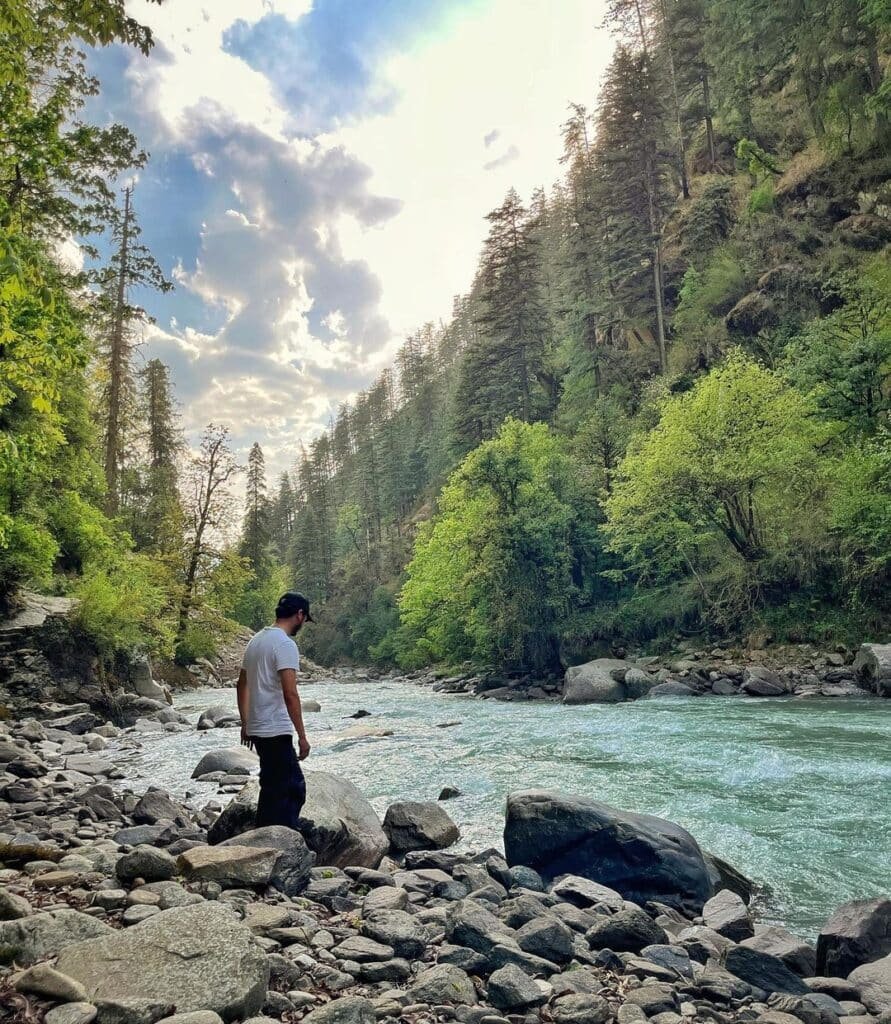
The trek is an incredible adventure that leaves trekkers in awe of its breathtaking highlights:
- Scenic Beauty: Brace yourself for a visual feast! The trek unfolds amidst awe-inspiring natural beauty, with picturesque landscapes, lush green meadows, dense forests, and shimmering streams. The imposing presence of the Swargarohini and Bandarpunch peaks creates a magnificent backdrop that will leave you speechless.
- Har Ki Doon Valley: The journey culminates in the stunning embrace of the Har Ki Doon Valley, nestled among the Garhwal Himalayas. This hidden gem offers an idyllic setting, boasting vast meadows that stretch as far as the eye can see. The panoramic views of the surrounding peaks create a serene ambience, inviting you to bask in its beauty.
- Cultural Immersion: The trek provides a unique opportunity to connect with the local communities residing in remote villages. Engage in heartfelt conversations, witness their vibrant traditions, and experience their warm hospitality. This cultural immersion adds a deeper appreciation and understanding to your journey.
- Mythological Significance: Step into the realm of mythology as you traverse the path believed to be taken by the Pandavas from the Mahabharata to ascend to heaven. Along the way, you’ll encounter ancient temples that carry the echoes of a rich and mythical past. Allow yourself to be enveloped by the spiritual aura of these sacred sites.
- Panoramic Views: Throughout the trek, you’ll be rewarded with awe-inspiring vistas from various viewpoints. The majestic snow-capped peaks, including Swargarohini, Hata peak, Bandarpunch, Kala Nag (black peak), and Jaundha, command attention and leave an indelible mark on your memory.
The trek invites you to embrace nature’s grandeur, immerse yourself in diverse cultures, and seek thrilling adventures. It’s an extraordinary journey that stirs the soul, creating treasured memories of breathtaking landscapes and forging a deep connection with the Himalayas.
Safety Tips & Precautions
While embarking on any trek, safety should always be a top priority. Here are some essential safety tips to keep in mind during the trek:
- Trek with an experienced guide, trek leaders and follow their instructions.
- Stay hydrated and carry an adequate supply of water.
- Pack light and carry only the essential items.
- Dress in layers to adapt to changing weather conditions.
- Respect the environment and maintain cleanliness.
- Inform someone about your trekking plans and expected return.
- Stay updated about weather conditions and local regulations.
- Avoid alcohol and smoking during the trek.
Essential Gear and Equipment
Before embarking on the trek, it is essential to pack the right gear and equipment to ensure a safe and comfortable journey. Here is a list of items you should consider carrying:
- Trekking shoes with good ankle support
- Backpack with rain cover
- Warm and waterproof clothing layers
- Sleeping bag suitable for sub-zero temperatures
- Trekking poles for better stability on uneven terrains
- UV-protected sunglasses and sunscreen
- Water bottles and water purification tablets
- Headlamp or flashlight with extra batteries
- First aid kit with essential medications
- Portable power bank for charging electronic devices
Conclusion
Get ready to embark on an extraordinary adventure through the captivating landscapes of the Har Ki Dun Trek. Every step you take will lead you to breathtaking vistas and unforgettable experiences. Nature’s splendour will surround you, from the majestic peaks of Swargarohini and Bandarpunch to the serene Har Ki Dun Valley.
Immerse yourself in the diverse wildlife of Govind National Park, and embrace the warm hospitality of the local communities residing in remote villages. The mythological significance adds a magical touch to the trek, connecting you to ancient traditions and stories of the past.
As you conquer challenging terrains and reach new heights, a sense of achievement will fill your heart. Let the beauty of wildflowers, cascading waterfalls, and panoramic views leave an indelible mark on your soul.
The Har Ki Dun Trek is not just an adventure; it’s an opportunity to rediscover yourself amidst the grandeur of the Himalayas. So, gear up, embrace the thrill of the unknown, and let this journey redefine your sense of adventure. Get ready to create lifelong memories and forge a deep connection with the majestic mountains that have inspired explorers for centuries.
FAQs
Har Ki Dun trek is considered easy to moderate difficulty level, suitable for both beginners and experienced trekkers.
The Har Ki Dun trek covers a distance of approximately 48 kilometres in total.
The average trekking fees for the Har Ki Dun trek range from ₹9,000 to ₹12,000. This fee typically includes essential services provided by trekking organisations in India.
Har Ki Dun holds mythological significance and is believed to be the path the Pandavas took from the Mahabharata to ascend to heaven. The trek allows trekkers to explore ancient temples and experience the region’s rich cultural history.
Comments
Add a comment
Leave a Reply · Cancel reply
This site uses Akismet to reduce spam. Learn how your comment data is processed.

har ki dun trek
March 28, 2025 at 11:17 amI DID THE HAR KI DOON TREK WITH TREK THE HIMALAYAS(TTH) LAST YEAR AND IT WAS SO AMZING AND MEMORABLE. CAN’T WAIT TO GO AGAIN!